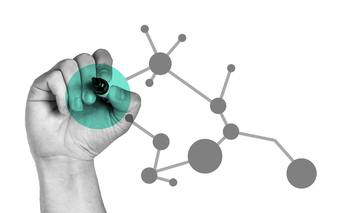Who is a product manager and what does a typical development cycle with a product manager look like?
Product managers are often the most overlooked job descriptions in startups. The “let’s hack together” mindset is great but might not scale after a certain point. It becomes imperative that someone is incharge of defining the “what to build” part of the problem extremely well, keeping the customer’s problems in mind.
Ben Horowitz was right when he said,
Product Managers are the CEO’s of the products.
Good product managers think about the story they want written by the
press. Bad product managers think about covering every feature and being
really technically accurate with the press.
So who is a Product Manager? A Product Manager is someone who owns the product — design, rollout, user acceptance criteria, user adoption and in many cases revenue. And in many small startups, the CEO is the Product Manager.
Who does the Product Manager work with? Typically with the customers or with the key executives. The Product Manager translates a business vision into a well defined product that solves critical customer problems and drives revenue.
What does a typical development cycle for a Product Manager look like?
- Define the Vision for the product.
- Define the use cases for the product.
- Define the Modules, Release Defining Features and a UI Metaphor
- Build Wireframes — Use tools like Pencil, Balsamiq or just sheets of white paper.
- If the Product Manager owns the product, he or she must be sure that he is solving the problem that he set out to solve.
- Build a full HTML prototype that almost works (everything but the server side code) together with a UI Engineer who is familiar with UI design patterns, UI libraries and other UI components necessary to meet the UI look and feel. The look and feel if built for the first time might require a fair amount of effort. Subsequent efforts should use an existing templates and should be much faster.
- Limit the above steps 4-6 to 1-2 screens or as many as the team can build and release per iteration.
- Build test cases with the QA team. Verify that the screens meet
- Transfer over to the engineering team to get to code complete status.
- The product manager is involved in the code-bugfix cycle.
- Product manager then conducts the acceptance criteria and then
- Approve the features to be released into a production environment.
- Repeat the wireframing process through a new iteration through multiple iterations until all of the release defining features have been met.
The job of a product manager doesn’t end here. It typically moves into the marketing domain where the product manager might work with marketers / growth hackers in the organization to build the packaging for the product and take it to market.
This might mean that the product manager might build press kits, landing pages, talk to press and conduct a launch.
Further reading:
Product Managers: Who are these ‘mini-CEOs’ and what do they do?


